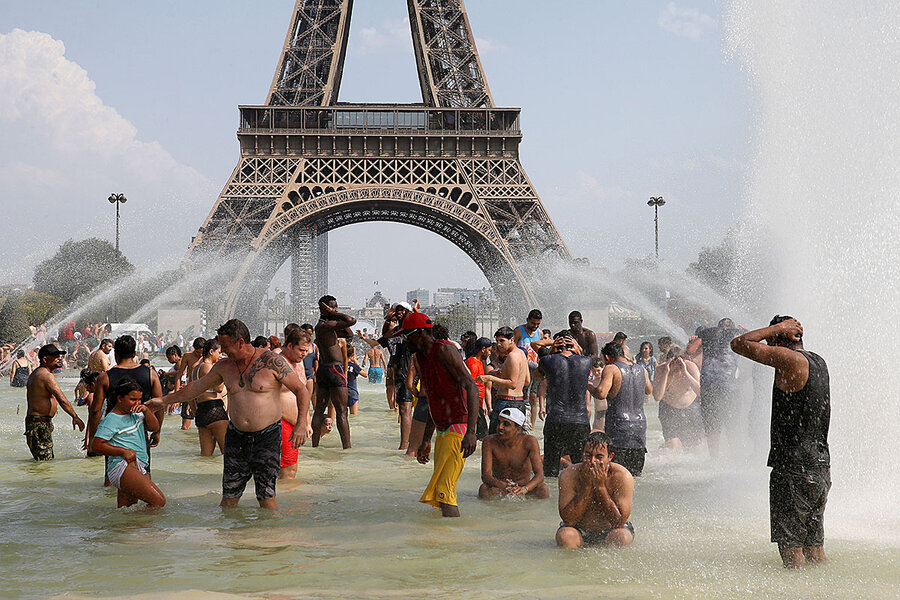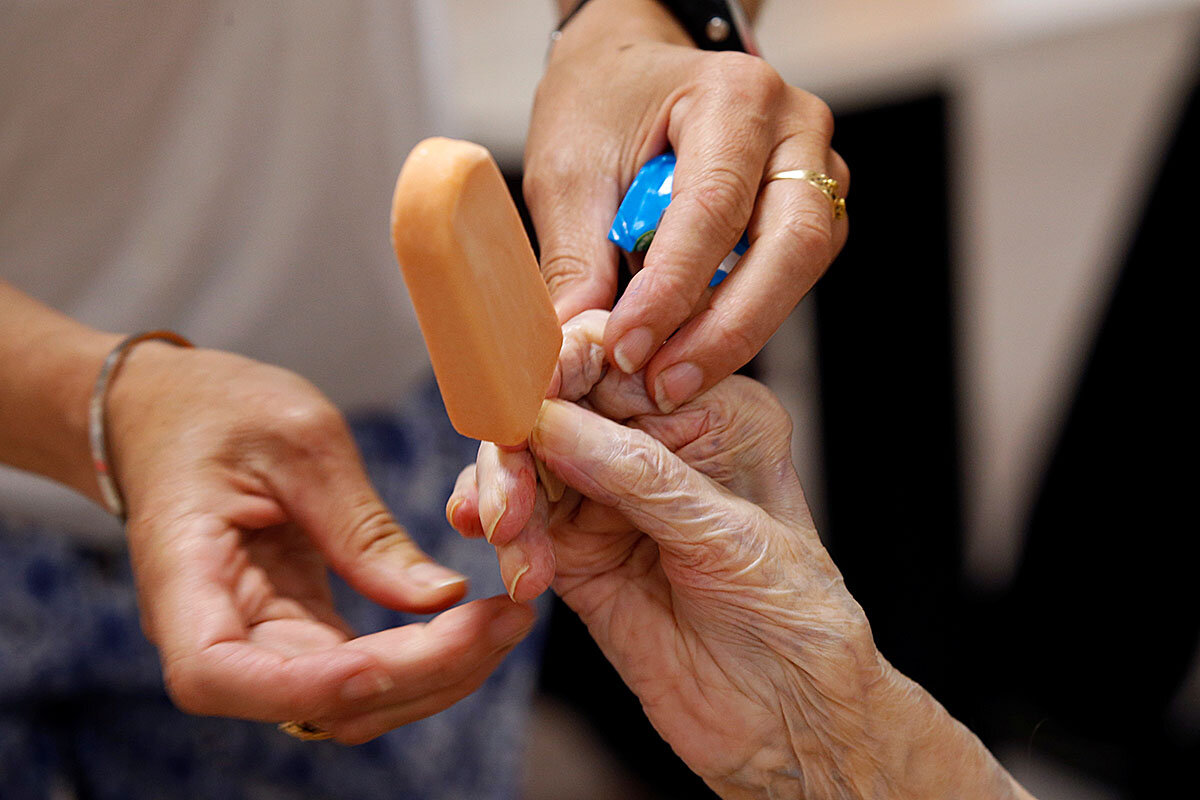Heat waves: How France has cut death toll 90% since 2003
Loading...
| Paris
In August 2003, France baked. A record-breaking heat wave swept the country for two weeks, pushing the thermometer up to 111.4 degrees Fahrenheit. And when the temperature began to drop the French suffered another shock.
More than 15,000 people – mostly old people, and often lonely old people – had died because of the unusual heat, they discovered. The country was mortified.
This year, summer struck with a vengeance again; temperatures reached a national record of 114.8 F. But this time the death toll did not exceed 1,462, according to just-released official figures.
Why We Wrote This
The last time extreme heat hit France, it was deadly on a massive scale. This summer was hotter, but authorities’ careful planning prevented a repeat of the death toll, lowering it 90%. This is how they did it.
“Thanks to preventive measures and warning messages that the public took on board, we have succeeded in reducing 2003’s mortality rate tenfold,” French Health Minister Agnès Buzyn said.
Key to that achievement was the National Heat Wave Plan that the government drew up in 2004 – a top to bottom nationwide action plan setting out who should do what when temperatures reach certain levels.
“There used to not be any organized coordination” when heat waves arrived, recalls Mathilde Pascal, a researcher with the French Public Health Agency. Now everyone from the prime minister to the village mayor has his or her duties spelled out.
Another problem in 2003, says Ms. Pascal, was the that the Health Ministry’s press release warning about the heat wave did not really get through to people. “The idea that summer heat could actually be dangerous struck people as a bit ridiculous,” she says.
Not so today. This year the government unleashed a flood of leaflets, posters, radio and TV spots, and internet advertisements warning people about the heat wave and advising them how to cope with its effects. “People take these warnings seriously now,” says Ms. Pascal.
And when they don’t, cabinet ministers go on TV to tell them off. Ms. Buzyn reprimanded “irresponsible” runners who continued to go jogging at noon and parents “who leave their kids in the car when they nip into a shop.”
“So long as we see risky behavior ... we will keep on plugging the message,” she told a France 2 TV interviewer in June.
The heat wave plan, which has been refined over the past 15 years, is built on careful forecasting by the national meteorological service and widespread diffusion of those forecasts so the public and officialdom can prepare for any unusually hot weather.
The plan sets four levels of preparedness, from keeping a special eye out between June 1 and Sept. 15 up to “maximum mobilization” declared by the prime minister. At each stage the apparatus of the state, ranging from the national government to local pharmacies and mayors, swings into action.
A major thrust concerns publicity. This year marked the first time the authorities declared a top-level “red alert” and the first priority, explains Ms. Pascal, “was to remind people of the simple commonsense steps that they might not always follow” such as drinking at least a liter of water a day, eating normally, and avoiding outdoor exercise.
The authorities also took special measures in special circumstances. Homes for older people were required to provide a “cool room” for their residents – either air conditioned or shaded and facing north. School outings and sporting events were canceled. The Paris metro system asked commuters to travel only if absolutely necessary because its cooling system was overloaded. A nationwide high school entrance exam was postponed. Government departments and private firms allowed more people to work from home. City authorities tried watering the streets, though that had only a limited impact.
In 2003, the death toll was especially high among isolated old people; every town hall in the country is now obliged to keep a register of its senior citizens so that health workers or volunteers can check up on them by phone or in person.
Events in 2003 also revealed that health workers were generally unfamiliar with heat stroke, a potentially fatal condition. In those days, first aid providers were unsure both of the symptoms and the necessary care. Since then, says Ms. Pascal, “we have made a lot of progress in training health workers about this.”
Now, she says, with heat waves increasingly common and increasingly severe, the authorities are turning their attention from immediate health care tasks toward more structural approaches to keeping cool. Individuals can do much to protect themselves from heat waves, Ms. Pascal points out. But the phenomenon has now become widespread and poses wider questions.
French playgrounds, for example, are being given makeovers so as to tear up tarmac and replace it with less heat absorbent materials, or just to plant more greenery. New construction regulations make better insulation mandatory. With this year’s heat wave starting in June, schools are considering how far into summer their classes should last.
“These are new issues,” says Ms. Pascal. “We have to cope with them.”







